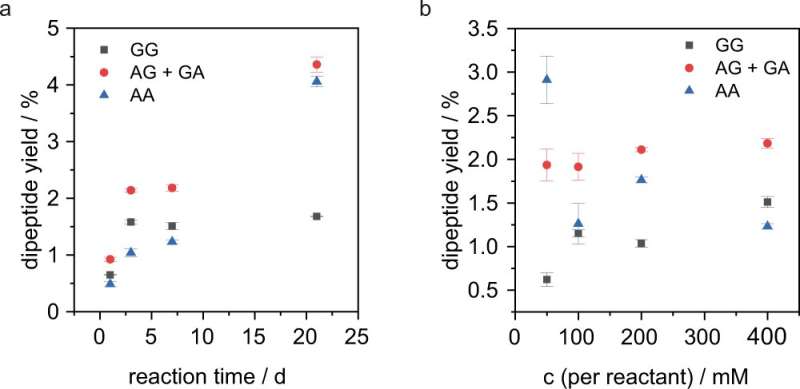Origin of Life: Peptide formation in liquid sulphur dioxide on early Earth

The formation of peptide bonds—the chemical bond between amino acids—in protein synthesis is one of the most important biochemical reaction steps. Without the development of structurally and catalytically active polymers, there would be no life on our planet. However, the formation of large, complex oligomer systems is prevented by the high energetic barrier of peptide condensation in aqueous solution.
LMU chemists led by Professor Oliver Trapp have shown that liquid sulfur dioxide provides an advantageous environment for copper-catalyzed peptide condensations. Compared to water, amino acids are activated in sulfur dioxide, leading to the incorporation of all 20 proteinogenic amino acids into proteins. Strikingly, even extremely low initial reactant concentrations of only 50 mM are sufficient for extensive peptide formation, yielding up to 2.9 percent of the dipeptide dialanine in seven days.
The reactions carried out at room temperature and the successful use of the copper-containing mineral covellite (CuS) as a catalyst, suggest a volcanic environment for the formation of the peptide world on early Earth: Both sulfur dioxide and covellite can be released by hydrothermal systems in volcanically active areas. Covellite is one of the 13 copper minerals, which may have been present in the Hadean and constituted 2.1 percent of the prebiotic mineral inventory.
More information: Fabian Sauer et al, From amino acid mixtures to peptides in liquid sulphur dioxide on early Earth, Nature Communications (2021).
Journal information: Nature Communications
Provided by Ludwig Maximilian University of Munich





















